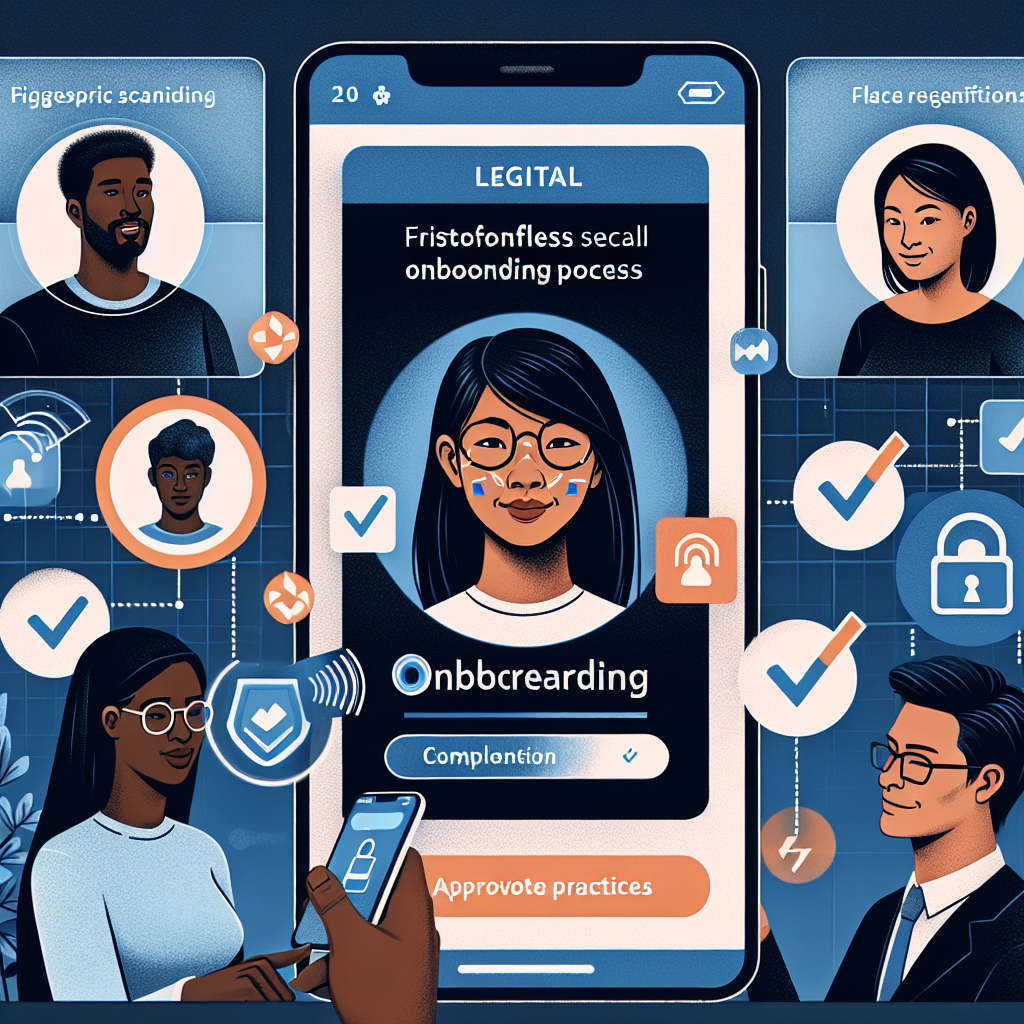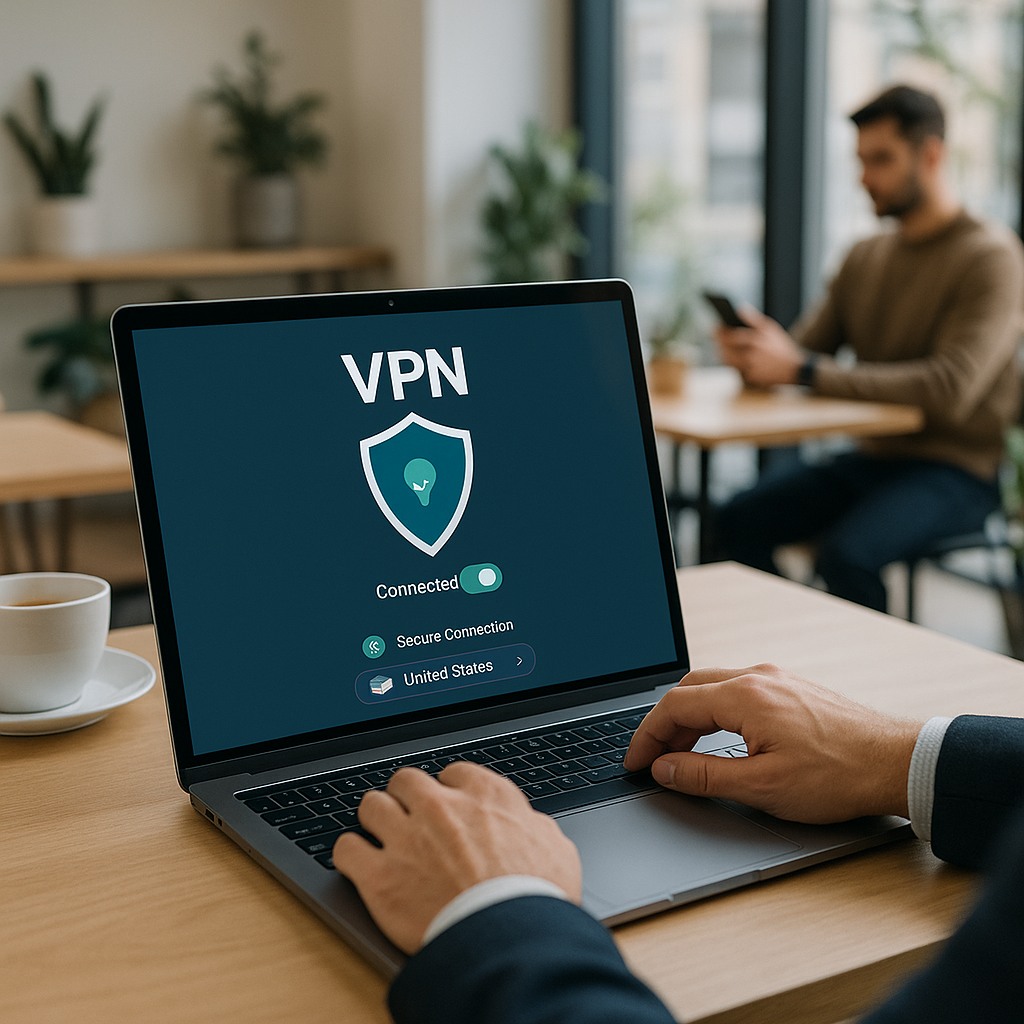Fintech app onboarding is vital for user retention and satisfaction. Awell-executed onboarding process not only helps users understand your app butalso keeps them engaged.This article covers why onboarding is crucial, challenges you might encounter,and best practices to create a seamless user experience.KEY TAKEAWAYS * A smooth onboarding process is crucial in fintech, as it builds trust and significantly impacts user retention. * Compliance with regulations like KYC and AML poses challenges in onboarding but is essential for a secure user experience. * Utilizing KPIs such as activation rates and user retention rates helps fintech companies refine their onboarding strategies for better engagement.THE SIGNIFICANCE OF EFFECTIVE FINTECH APP ONBOARDINGA seamless onboarding process is essential for retaining users and fosteringlong-term engagement. In the competitive fintech landscape, how you welcome newusers can make or break their experience. Effective onboarding ensures clientsunderstand the services offered, significantly improving retention rates. Thisfirst impression sets the tone for the entire customer relationship, making usertrust and satisfaction paramount.The onboarding process is akin to the first handshake with your user. If it’sawkward or overly complicated, users are likely to abandon the app. Conversely,a strong onboarding experience can cultivate loyal customers who feel confidentand valued. This is especially crucial in the fintech industry, where trust andsecurity are foundational. A smooth onboarding strategy allows fintech companiesto differentiate themselves and positively shape the entire customer experience.Streamlining the onboarding process reduces customer abandonment by maintaininguser motivation and minimizing frustration. Personalized onboarding experiencescatering to user-specific goals can greatly enhance satisfaction. Clearinstructions, a user-friendly interface, and relevant security measures arecrucial for a seamless user experience.A successful onboarding process improves user engagement and minimizes customer churn, fostering long-termcustomer success through a great onboarding process that has completedonboarding.KEY CHALLENGES IN FINTECH APP ONBOARDINGNavigating the intricacies of fintech app onboarding is no small feat. One ofthe most significant challenges fintech companies face is regulatory compliance.Adhering to AML, KYC, data protection regulations, and financial institutionsreporting requirements is essential to avoid hefty penalties and maintain usertrust. Meeting these compliance standards while offering a seamless userexperience requires meticulous attention to detail.Integrating with multiple existing systems, especially in B2B scenarios, isanother common obstacle. This integration often faces technical challenges,delaying the onboarding process and frustrating new users.Finding the right balance between stringent security measures and auser-friendly experience is crucial. While security can’t be compromised, theease of navigating the onboarding journey is equally important. These challengeshighlight the need for an onboarding strategy that addresses both userexperience and regulatory requirements.ESSENTIAL KPIS FOR MEASURING FINTECH APP ONBOARDING SUCCESSTracking key performance indicators (KPIs) offers invaluable insights into theeffectiveness of your onboarding process. One primary KPI is the activationrate, measuring the percentage of users who reach their first significantexperience, often referred to as their ‘aha moment’ during onboarding. Thismetric indicates how quickly users find value in your app.Another important KPI is the user retention rate, which shows the percentage ofusers who remain active within a specific period following their signup. Highretention rates are a strong indicator of successful onboarding, as they reflectongoing user engagement and satisfaction.The completion rate, denoting the percentage of users who finish the onboardingprocess, is essential for evaluating onboarding flow effectiveness. Monitoringdropout rates helps identify stages where users disengage, allowing for promptadjustments.Metrics like stickiness, calculated by the ratio of Daily Active Users (DAU) toMonthly Active Users (MAU), provide insights into regular user engagement. Time to value (TTV),assessing how quickly users derive value, and the install-to-registration rate,showing the proportion of users who register after downloading the app, are alsocrucial KPIs.Utilizing advanced analytics allows fintechcompanies to pinpoint areas for improvement and continuously refine theironboarding strategy, giving them a competitive edge.BEST PRACTICES FOR STREAMLINING FINTECH APP ONBOARDINGCreating a seamless user experience in fintech apps involves streamlining theonboarding process. This includes simplifying the signup process, enhancing theKYC process, and optimizing onboarding for mobile devices, which all provide keybenefits. Additionally, a payment app can further enhance these features.By implementing these best practices, fintech companies can improve userengagement and satisfaction, making the entire onboarding journey more efficientand user-friendly.SIMPLIFYING THE SIGNUP PROCESSA simplified signup process is the first step to a seamless onboardingexperience. Requesting only essential information like name and email addressreduces friction and encourages user participation. Breaking down the signupprocess into smaller, manageable steps makes it less daunting and moreuser-friendly, streamlining the entire process.Automating onboarding tasks can significantly reduce friction and enhance userengagement. For example, using checklists that automatically check off completedtasks can guide users through the signup process seamlessly. Focusing on theseelements helps fintech companies create a more efficient onboarding experiencethat keeps users motivated and engaged.ENHANCING THE KYC PROCESSThe Know Your Customer (KYC)process ensures compliance and prevents the illegal use of financial services.Fintech companies must stay up-to-date with KYC and anti money launderingregulations to adapt their digital onboarding processes efficiently. Typically,KYC processes require government-issued identification like passports ordriver’s licenses, which can be streamlined by starting with minimal informationand gradually collecting more as needed for customer identification.Biometric authentication greatly enhances the onboarding experience byeliminating the need for passwords and improving convenience during the KYCprocess. Automated systems that monitor customer transactions for suspiciousactivities are essential for maintaining AML compliance and ensuring a secureonboarding process.Integrating these advanced verification methods helps fintech companies create aseamless onboarding journey that builds trust and ensures compliance through theverification process of document verification.OPTIMIZING ONBOARDING FOR MOBILE DEVICESGiven the increasing reliance on smartphones for financial transactions,optimizing the onboarding screens for mobile devices is essential. Mobileonboarding should account for limited screen space by providing clear messagingand concise instructions. Minimizing typing and using mobile capabilities suchas camera and GPS can further enhance the user experience. Structuring theonboarding process with necessary steps and visually displaying progress canmake it more manageable for users.Accounting for dropped connections during the onboarding process prevents usersfrom needing to restart. Clear instructions and minimized data entry cansignificantly improve the mobile onboarding experience.Focusing on these factors allows fintech companies to create a seamlessonboarding journey that caters to the needs of mobile users.LEVERAGING TECHNOLOGY TO IMPROVE ONBOARDINGTechnology can significantly enhance the onboarding process. Automation toolsand AI/machine learning technologies streamline onboarding tasks, improvesecurity, and provide personalized experiences.Incorporating these technologies helps fintech companies create a more efficientand user-friendly platform onboarding journey.UTILIZING AUTOMATION TOOLSAutomation can significantly enhance the onboarding experience by reducingrepetitive tasks and minimizing errors. For example, automation tools likeUserpilot assist in creating onboarding experiences by allowing the design ofchecklists and triggering UI elements efficiently. Automating the onboardingprocesses decreases onboarding times and enhances customer satisfaction.Using checklists that automatically check off completed tasks can streamline theonboarding process for new users. Automation tools also ensure regulatorycompliance by automating identity verification and other critical tasks, makingthe onboarding process more efficient and secure.IMPLEMENTING AI AND MACHINE LEARNINGAI and machine learning offer innovative approaches to enhancing the clientonboarding process. These technologies analyze customer behavior to gaininsights into preferences and pain points, allowing for a more personalizedonboarding experience. Data collected through AI continually refines theonboarding process, ensuring it remains efficient and user-friendly.Personalization through AI improves customer satisfaction and enhances theoverall onboarding experience. Leveraging AI to gather information aboutcustomers’ financial goals and preferences helps fintech companies createtailored onboarding journeysthat resonate with individual users. This level of personalization significantlyboosts user engagement and retention.TOP TIPS FOR IMPROVING FINTECH APP ONBOARDING 1. Personalized User Journeys Tailoring the onboarding experience based on user data and preferences can significantly improve engagement. Utilize initial user inputs or collected data to provide customized paths, reducing irrelevant steps and enhancing user satisfaction. 2. Clear Value Proposition Highlight your fintech app’s unique value early in the onboarding process. Clearly communicating how your app meets users’ specific financial needs can drive higher activation rates and decrease drop-off. 3. Progress Indicators Including progress bars or indicators during onboarding helps users understand how far they’ve come and what remains. This transparency can motivate users to complete the process, as they visually track their advancement. 4. Interactive Tutorials and Walkthroughs Incorporating interactive tutorials or walkthrough videos can simplify complex financial services, making it easier for users to quickly grasp essential features without feeling overwhelmed. 5. Gamification Elements Using gamification elements, such as rewards, badges, or achievement milestones, can make the onboarding process engaging and enjoyable, motivating users to complete tasks and explore further app functionalities. 6. Instant Support Access Providing immediate access to support, such as chatbots or helpdesk integrations within the onboarding flow, reduces frustration and improves user confidence, especially when encountering difficulties. 7. Regular Communication Sending personalized follow-up communications after onboarding completion, such as tips, guides, or success stories, can nurture user engagement and reinforce the value of continuous app usage.ENSURING A SECURE ONBOARDING PROCESSSecurity is a cornerstone of the onboarding process in the fintech industry.Effective onboarding processes must clearly communicate data usage and securitymeasures toenhance user trust and establish trust. Trust is crucial for customer engagementand willingness to share financial information. A smooth and secure experiencebuilds trust and fosters long-term relationships with users.Maintaining regulatory compliance during onboarding reduces the risk of errorsor omissions in regulated industries, ensuring compliance. Automation and AIenhance compliance by streamlining verification processes. Key measures toensure data security during onboarding include multi-factor authentication,encryption, and SSL certificates. Fintech platforms should also use encryption,secure data storage, and anti-fraud measures to protect customer identities.Clearly communicating the purpose of KYC checks enhances user compliance andunderstanding. Assuring users about data protection practices builds their trustin the onboarding process. Focusing on these security measures allows fintechcompanies to create a secure and trustworthy onboarding journey that meetsregulatory requirements and protects user data.COLLECTING AND UTILIZING CUSTOMER FEEDBACKCollecting customer feedback during the onboarding process to identify commonpain points enhances the customer journey onboarding strategy. Surveys anddirect user inquiries gather insights about the onboarding experience throughcustomer data collection. This feedback reveals desirable features and potentialbugs, providing valuable information for iterative improvements.Using customer feedback to make iterative changes keeps the onboarding processaligned with user expectations and technological advancements. Identifying userpain points through research and feedback helps fintech companies refine theironboarding strategies for ongoing enhancement.Incorporating this feedback allows fintech companies to create a more efficientonboarding process that meets users’ needs.CASE STUDIES: FAIRMONEY – MODIFYING THE REGISTRATION PROCESS FOR NEW USERSFairMoney, a leading fintech app in Nigeria, partnered with toscale KYC processes amid rapid growth. integrated a multi-layered KYCsystem with secure identity verification, AML compliance, and seamlessonboarding across multiple countries.The goals included enabling quick market entry into new countries by integratingwith localized KYC providers and enhancing user experience with a fast, seamlessonboarding process to drive user conversion. ensured user verification through secure facial recognition andgovernment ID verification. The collaboration resulted in streamlined KYCprocesses that ensured compliance with local regulations, providing an intuitiveonboarding experience for users. also worked on modifying the registration process for new users toinclude identity verifications and preparing a feature for in-app identityverification to increase transaction limitsMONITORING AND ITERATING THE ONBOARDING PROCESSRegular evaluations of the customer onboarding process identify areas forimprovement and necessary adjustments. Periodic reviews help fintech companiesadapt to evolving product features and changing customer needs. Successfulonboarding is indicated by metrics such as high retention rates, low churnrates, and high customer satisfaction scores.Utilizing analytics and customer tracking tools allows fintech companies toeffectively monitor customer engagement during onboarding. Conducting customersatisfaction surveys immediately after onboarding provides valuable insightsinto user experience. Regularly assessing customer progress and addressingconcerns ensures a smoother onboarding process and increases customersatisfaction.SUMMARYMastering fintech app onboarding is crucial for user retention and engagement inthe competitive financial technology landscape. By focusing onsimplifying the signup process, enhancing the KYC process, optimizing formobile, leveraging technology, ensuring security, and collecting customerfeedback, fintech companies can create a seamless onboarding journey. Regularlymonitoring and iterating the onboarding process ensures it remains effective andaligned with user needs. A well-designed onboarding process not only improvesuser satisfaction but also fosters long-term loyalty and success.FREQUENTLY ASKED QUESTIONSWHAT ARE THE 5 D’S OF FINTECH?The 5 D’s of fintech are Digitization, Disruption, Democratization,Decentralization, and Data. These principles help shape the evolving landscapeof financial technology. As cybersecurity in fintech becomes increasinglyimportant, understanding these evolving trends becomes crucial.WHY IS EFFECTIVE FINTECH APP ONBOARDING IMPORTANT?Effective fintech app onboarding is important because it helps users grasp theservices, fosters trust, and boosts retention. A smooth onboarding experiencecan lead to lasting customer loyalty and engagement.WHAT ARE THE COMMON CHALLENGES IN FINTECH APP ONBOARDING?One of the biggest challenges in fintech app onboarding is finding the rightbalance between security and user experience, all while ensuring regulatorycompliance. Addressing these issues with a solid strategy is key to making theprocess smooth for users.WHAT ARE THE ESSENTIAL KPIS FOR MEASURING ONBOARDING SUCCESS?To effectively gauge onboarding success, focus on key KPIs like activation rate,user retention rate, and time to value. These metrics highlight how well youronboarding process is working and where you can enhance it.HOW CAN TECHNOLOGY IMPROVE THE ONBOARDING PROCESS?Absolutely, technology can really streamline onboarding by using automation tocut down on repetitive tasks and errors. Plus, AI can tailor the experience tofit individual needs, making it smoother and more engaging for everyoneinvolved.

Mastering Fintech App Onboarding: Top Tips for Seamless User Experience
Posted Date:





